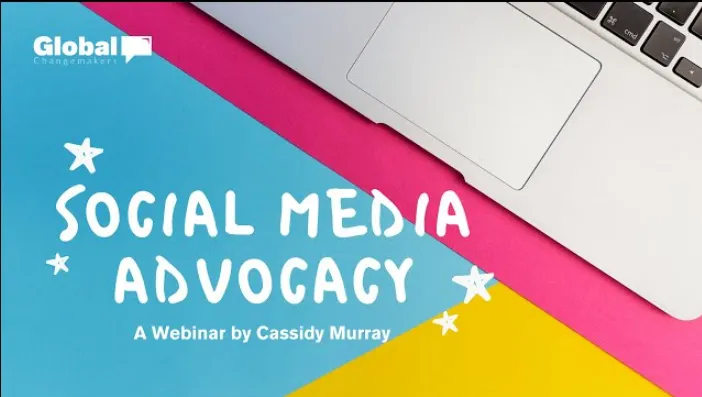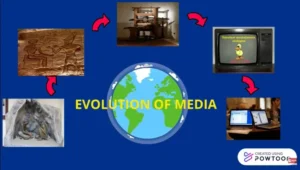The Media Aim to Make the Public Informed Advocates

The media aims to inform, engage, and influence public opinion. It serves as a bridge between events and audiences worldwide.
Understanding the role of media in society is crucial. Media outlets, from breaking news platforms to in-depth analysis providers, shape how we perceive the world. They deliver real-time updates, spotlight societal issues, and offer forums for public debate.
This unparalleled power to mould minds and cultures carries immense responsibility. Professional journalism upholds truth and accountability, ensuring an informed citizenry and a vibrant democracy. The media’s reach extends beyond mere reporting; it sparks conversations, drives social change, and holds those in power accountable. With constantly evolving digital landscapes, the media’s methods and impact continue to expand, reaffirming its pivotal role in contemporary society.
Contents
The Media’s Mission
The media plays a crucial role in society. It aims to inform and engage. By providing vital information, it powers knowledge and understanding. It shapes public opinion and inspires action. Let’s delve into how the media strives to educate and advocate, shaping a more informed and proactive community.
Educating The Public
The core function of the media is education. It offers news, insights, and analysis. The goal is to make complex issues clear and digestible. Media outlets release facts and figures. They help build well-informed citizens. This is done through:
- Breaking news updates to keep citizens aware of current events.
- In-depth reports that explain the ‘why’ behind the news.
- Interactive media, such as videos and infographics, to engage audiences.
Fostering Advocacy
Beyond sharing news, the media inspires action. It shines a light on important causes. It gives a voice to those who often go unheard. Media platforms encourage viewers to become advocates. They use stories to drive change. They focus on:
- Highlighting social issues with powerful narratives.
- Connecting readers with resources to take action.
- Creating campaigns that spur public involvement.
Informing Vs. Influencing
The role of media is complex in our daily lives. It shapes how we view the world around us. Yet, it is crucial to distinguish between its core functions: informing and influencing. Informing suggests presenting raw data and factual reports, enabling people to form conclusions. In contrast, influencing involves the media delivering these facts with a slant, aiming to mould public opinion and perceptions. The balance between these two is delicate and often scrutinized.
Presenting Facts
To present facts means giving information without bias. Facts stand on their own — they do not push a viewer to believe in one direction or another. Reliable sources and unbiased reporting are the pillars of this approach. Consider the presentation of a news report. Does the report list the who, what, when, where, why, and how? If so, it is likely attempting to inform.
- Who: Identifies the individuals or groups involved.
- What: Describes the event or situation.
- When: Provides the time frame of the occurrence.
- Where: States the location of the event.
- Why and How: Explain the reasons behind the event and the method by which it happened.
Shaping Perspectives
When the media seeks to shape perspectives, it goes beyond mere reporting. Here, language, imagery, and presentation strategies play a crucial role. Words can carry connotations that subtly influence how the audience perceives information. The objective? It is meant to lead viewers towards a particular understanding or to support a specific cause. The table below exemplifies words with neutral and charged meanings:
| Neutral | Charged |
| Change | Revolutionize |
| Discuss | Grill |
| Reduce | Slash |
| Use | Exploit |
Consider the difference between ‘change’ and ‘revolutionize.’ While both refer to making something different, ‘revolutionize’ suggests a complete and radical transformation, likely churning emotions. The choice of words is deliberate, aiming to sway emotion and thought.
Evolution Of Media Outlets

The media landscape has seen a dramatic shift over the years. How we consume information has evolved from print newspapers to digital news apps. This evolution has transformed how media outlets operate and the content they produce.
Traditional To Digital Transformation
Media’s journey from traditional to digital is a tale of tech progress. Previously, news lived on paper or came through the airwaves at scheduled times.
Now, digital platforms provide instant access to news. Here’s how the media leapt:
- Print to Pixels: Newspapers and magazines went from tangible copies to online articles.
- Broadcast to Stream: News channels now stream live on various devices.
- Physical to Virtual Reality: Experiences like virtual reality have entered journalism, offering immersive storytelling.
Changing Dynamics Of News
Social media and mobile devices changed news forever. The public no longer waits for updates in the morning paper or the evening news.
- On-Demand Access: News is available anytime, appealing to a culture of immediacy.
- User-Generated Content: Social media allows anyone to report events, shaping public opinions in new ways.
- Interactive Engagement: Readers can now interact with news stories, creating a two-way conversation between media outlets and consumers.
| Comparison: Then and Now | |
| Traditional Media | Digital Media |
| Scheduled Programming | 24/7 News Cycle |
| Limited Reach | Global Audience |
| Editorial Gatekeepers | Public Contributors |
Understanding this evolution is critical to staying informed in today’s fast-paced world. The media doesn’t just inform the public; it shapes how they perceive the world.
Role In Public Education
The media serves a vital role in educating the public. It delivers information daily. Everyone learns from the media. Children and adults use it for knowledge. Its power shapes minds and opinions. Media forms include news, documentaries, and educational programs. These tools impact what the public thinks and knows. The media can teach valuable skills. Skills help people understand the world better.
Media Literacy
Understanding media messages is essential. Media literacy is this understanding. It helps people know what is true. People learn to ask questions about what they see and hear. This skill is vital in today’s information-filled world.
- Evaluate sources – Know where information comes from.
- Understand messages – Get the real meaning behind media content.
- Identify bias – Notice if the story has a particular viewpoint.
- Recognize influence – See how media shapes beliefs.
Critical Thinking Promotion
The media also promotes critical thinking. It challenges people to think deeply. People compare what they learn from different sources. They decide what is trustworthy. Teaching critical thinking is essential. It guards against misinformation. It leads to more intelligent decisions.
- Ask Who, what, where, when, why, and how?
- Analyze – Look closely at arguments and evidence.
- Reflect – Think about your own opinions and beliefs.
- Conclude – Make a decision based on your analysis.
Media Tactics For Advocacy
Welcome to our exploration of media’s influential role in shaping public opinion through advocacy. The strategies employed by media entities can steer conversations, influence policy, and encourage action on critical issues. Let’s delve into the various tactics used to advocate effectively.
Narrative Crafting
Media organizations utilize narrative crafting as a foundational tactic for advocacy. This involves constructing stories that resonate with their audience. Compelling narratives can inspire change and generate widespread support.
- Emphasize relatability: Stories are crafted to deeply reflect universal themes that audiences connect with.
- Employ emotive language: Strategic word choice can evoke strong emotions, driving the audience to engage and act.
- Focus on impact: Narratives often highlight individual experiences to illustrate more significant societal issues.
Highlighting Social Issues
Media spotlight social issues, prompting public awareness and sparking dialogue.
| Social Issue | Media Approach | Expected Outcome |
| Environmental Concerns | Feature stories on climate change effects | Increase in eco-conscious behaviour |
| Health Crises | Report on healthcare system challenges | Public demands for policy change |
| Human Rights | Documentaries on rights violations | Mobilization of support groups |
Impact On Public Opinion
The media plays an essential role in shaping public opinion. Everyday stories and ideas presented in the news can influence people’s beliefs and attitudes. With the integration of online platforms, the impact has grown exponentially. The media does not just report news; it elicits reactions and guides conversations.
Opinion Polls And Surveys
Media outlets gauge public sentiment on various issues through opinion polls and surveys. These tools help to paint a picture of society’s collective mindset. Results often drive further media coverage, influencing the topics that dominate public discourse.
- Opinion polls measure public mood.
- Surveys give voice to the masses.
- Results impact news focus.
| Topic | Positive | Negative | Neutral |
| Environment Policies | 45% | 35% | 20% |
| Economic Growth | 60% | 25% | 15% |
Social Media’s Viral Effect
Social media platforms transform news sharing. They allow stories to spread like wildfire. Memes, tweets, and posts reach millions with a single click. This viral effect amplifies messages and magnifies their impact on public opinion.
- Memes grab attention.
- Tweets spread fast.
- Posts reach broad audiences.
P polls, surveys, and social media influence modern public opinion. These channels inform, misinform, and re-inform people. Understanding their influence is crucial in grasping the bigger picture.
Ethical Considerations
The media has tremendous power over public perception. With this power comes the responsibility to uphold high ethical standards. This section will delve into the pivotal aspects of ethics within media practice and underline the imperative of maintaining balance, accuracy, and accountability in reporting.
Bias And Objectivity
Media outlets aim to provide fair news and avoid taking sides. Sometimes, biases may slip through, forming public opinion unfairly. Journalists must work hard to stay neutral and present facts from all angles. Audiences deserve the whole picture to form their views. A commitment to objectivity secures trust and ensures a well-informed public.
Accountability And Fact-checking
Trust forms the backbone of media credibility. Every piece of information requires verification. Mistakes happen. When they do, the media must own up and correct them promptly. Rigorous fact-checking must precede every publication. A fact-checked article ensures readers receive accurate news. Accountability fosters reliability. It also keeps the public well-educated on essential matters.
Measuring The Influence
The media plays a critical role in shaping our perceptions. We need effective ways to measure how it influences the public sphere to understand its impact. This segment delves into methods to gauge the media’s sway on engagement and policy.
Assessing Public Engagement
Engagement levels offer insights into how content resonates with audiences. Analysts employ various tools and metrics to decode this interaction. Below are the critical indicators used:
- Social media analytics: Reflect likes, shares, and comments.
- Website traffic: Measured by visits and bounce rates.
- Surveys: Gather viewer opinions and feedback.
| Metric | Description | Importance |
| Engagement Rate | Interaction per content piece | Assesses content appeal |
| Reach | Audience size exposed to content | Gauges potential influence spread |
| Time Spent | The average duration of content | Indicates value offered |
Tracking Policy Changes
When media discussions influence policy, measuring such shifts is crucial. Here’s how these changes are tracked:
- Legislation mentions Scans for media-induced policy discussions.
- Regulatory filings: Searches for alterations citing media sources.
- Public records: Monitors official documents for change evidence.
Critical effects on policy include:
- New bills presented
- Amendments to existing laws
- Shifts in political priorities
Future Trends In Media
Exploring what shapes tomorrow often leads us to the evolving landscape of media. The media is about more than just delivering news. It influences our decisions, emotions, and worldviews. Understanding the future trends in media is essential. This knowledge helps us prepare for changes that shape industries, societies, and personal lives.
Technology’s Expanding Role
Advances in technology transform how we consume media. As tech grows, so does its role in media. From virtual reality experiences to AI-curated content, viewers enjoy more personalized media. Let’s look at key tech advancements:
- AI & Machine Learning: These create more innovative content recommendations.
- 5G Networks: Faster internet speeds enable seamless streaming.
- Blockchain: This ensures content security and creator rights.
Such technologies create a more dynamic, immersive, and secure media environment.
Greater Interactive Platforms
Interactive platforms pull viewers into the action. People don’t just watch media; they participate. See the trends enhancing interaction:
| Interactive Trend | Impact |
| Live Polling | Users vote during live broadcasts. |
| Gaming Elements | Media incorporates game-like features. |
| VR/AR Integration | Viewers explore virtual worlds. |
These trends invite viewers to engage with media in new, exciting ways.
Challenges Facing Media Advocacy
The media plays a pivotal role in shaping public opinion and advocating social change. Yet, this journey is fraught with hurdles. As the information landscape evolves, media advocates face increasing challenges in capturing attention and driving action.
Information Overload
The digital age brings an endless data stream, and users often experience fatigue. Media advocates must craft captivating messages that stand out amid the noise. Distilling complex information into clear, actionable insights is critical. Utilizing visual aids and concise language can help break through the clutter.
Desensitization And Apathy
Constant exposure to heavy topics can lead to public numbness, reducing the impact of essential messages. Media advocates must find new angles to present familiar issues. Engaging storytelling and personal narratives can resonate with audiences. These strategies help reignite compassion and spur individuals to take action.
Conclusion
The media’s influence shapes the public perspective. It’s a power that demands responsibility and discernment. We become informed, critical viewers by understanding the intent behind media messages. Let’s embrace this awareness, ensuring that what we absorb enriches our lives and nurtures informed communities.


